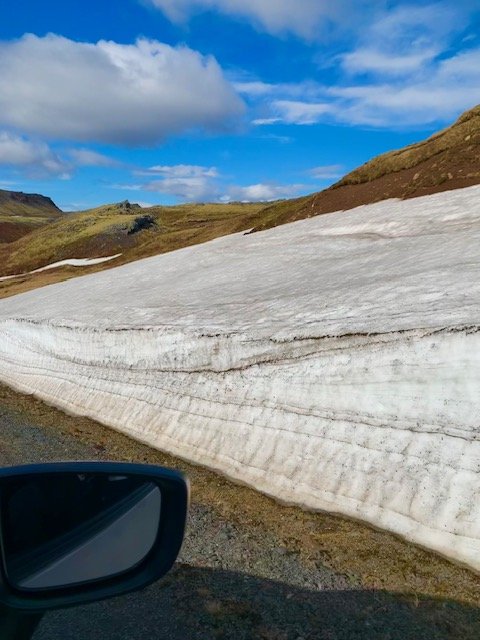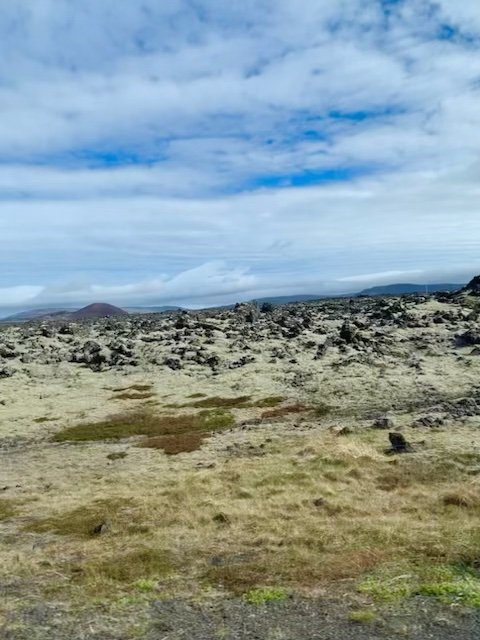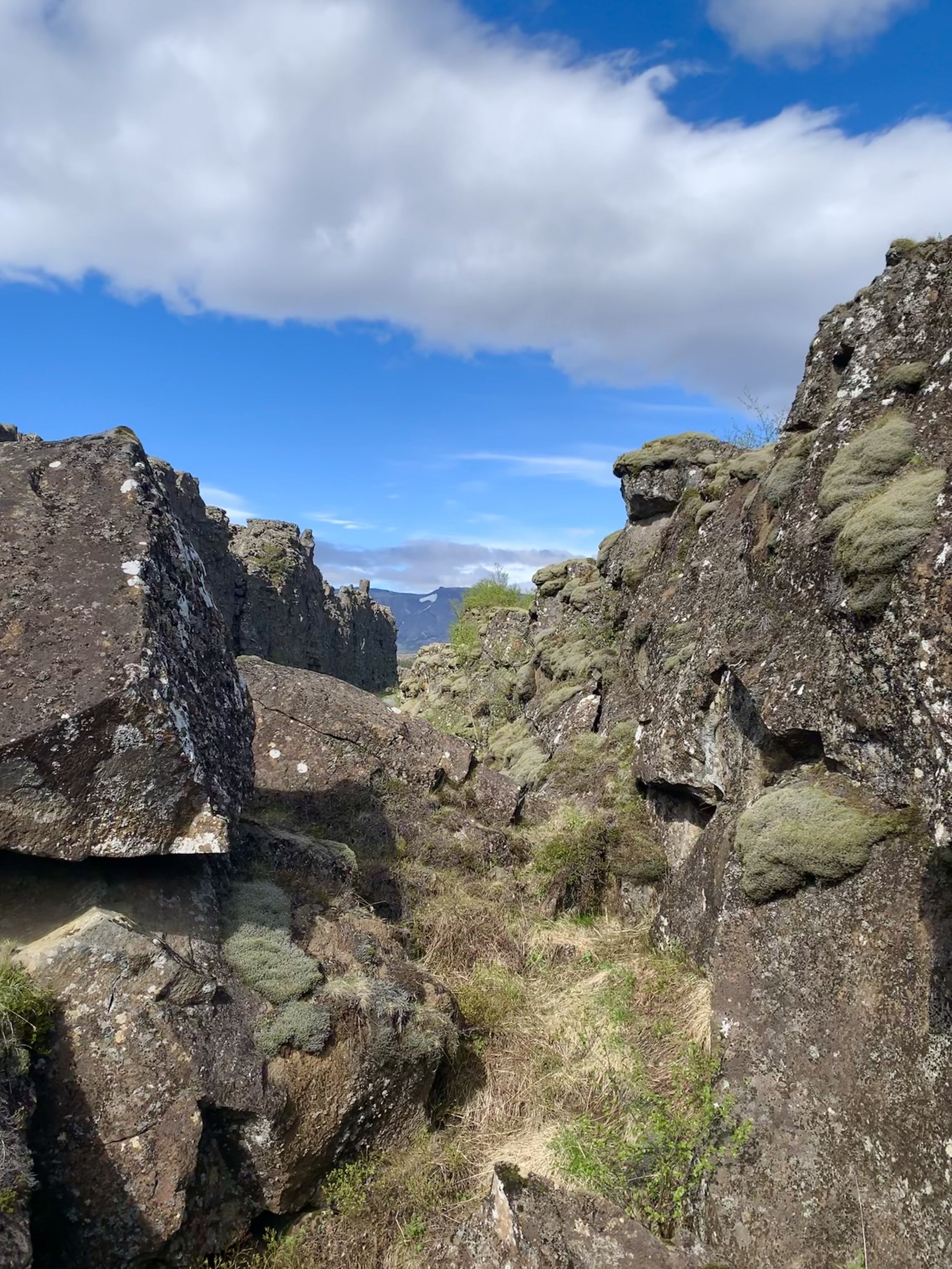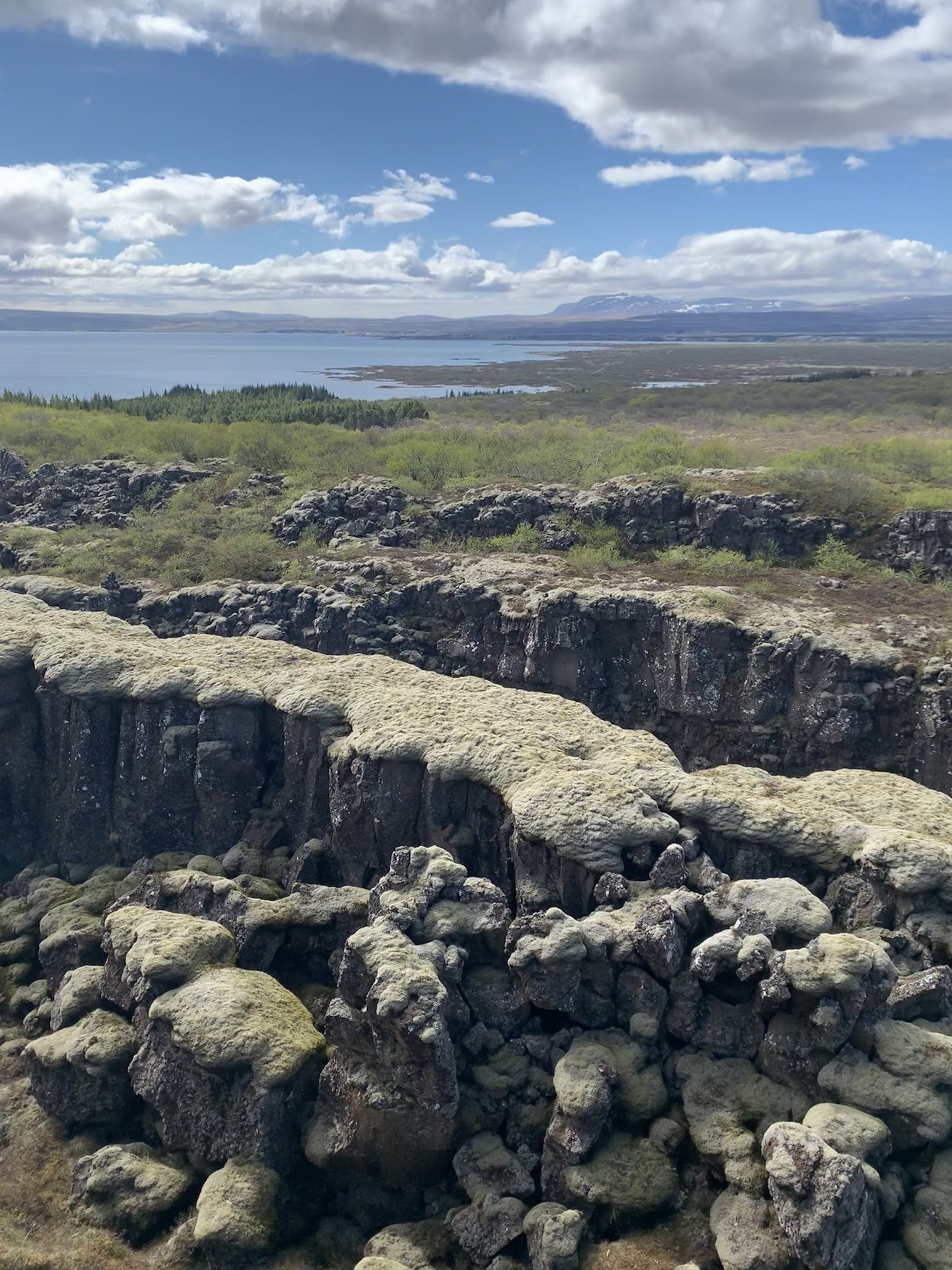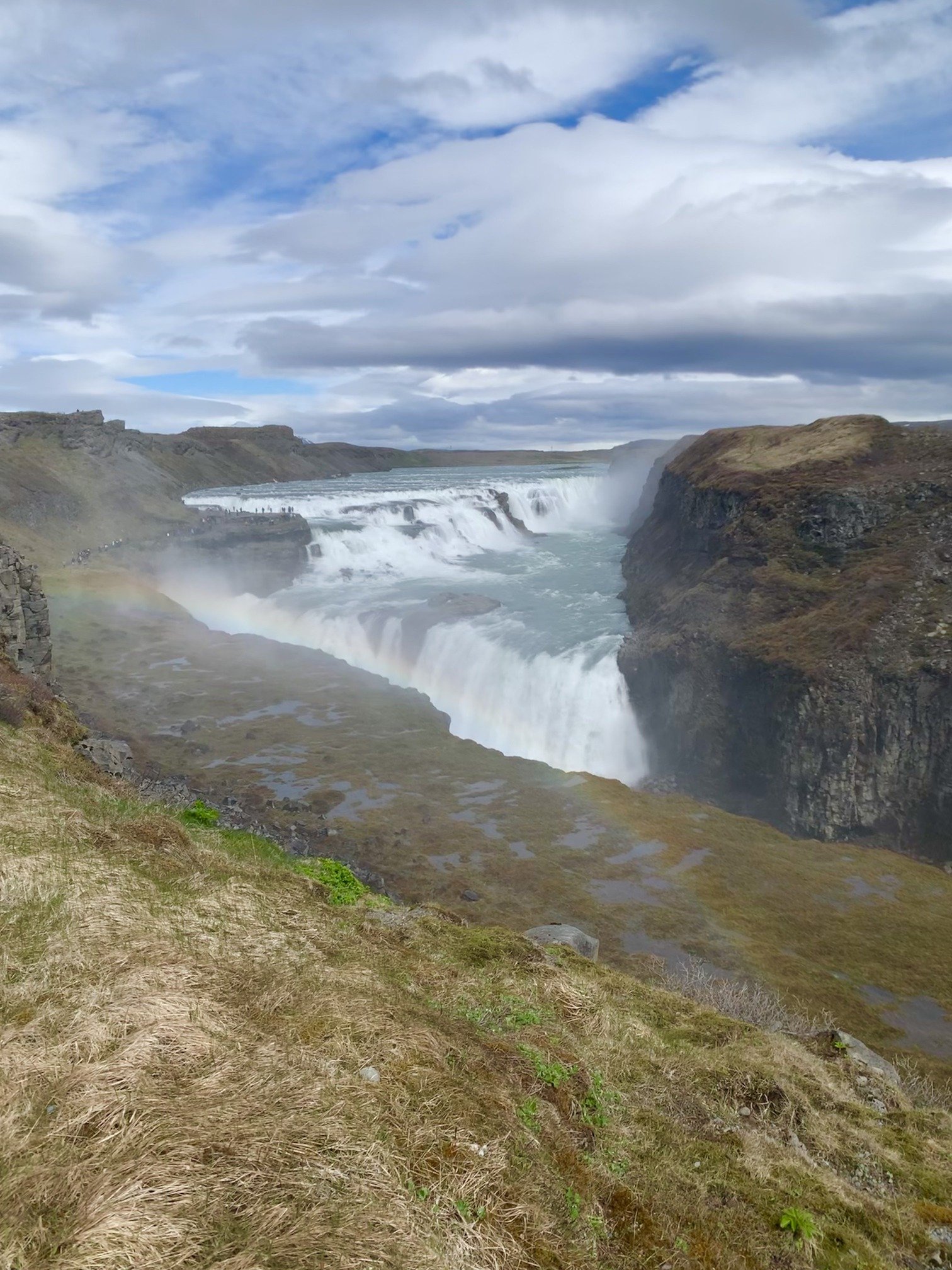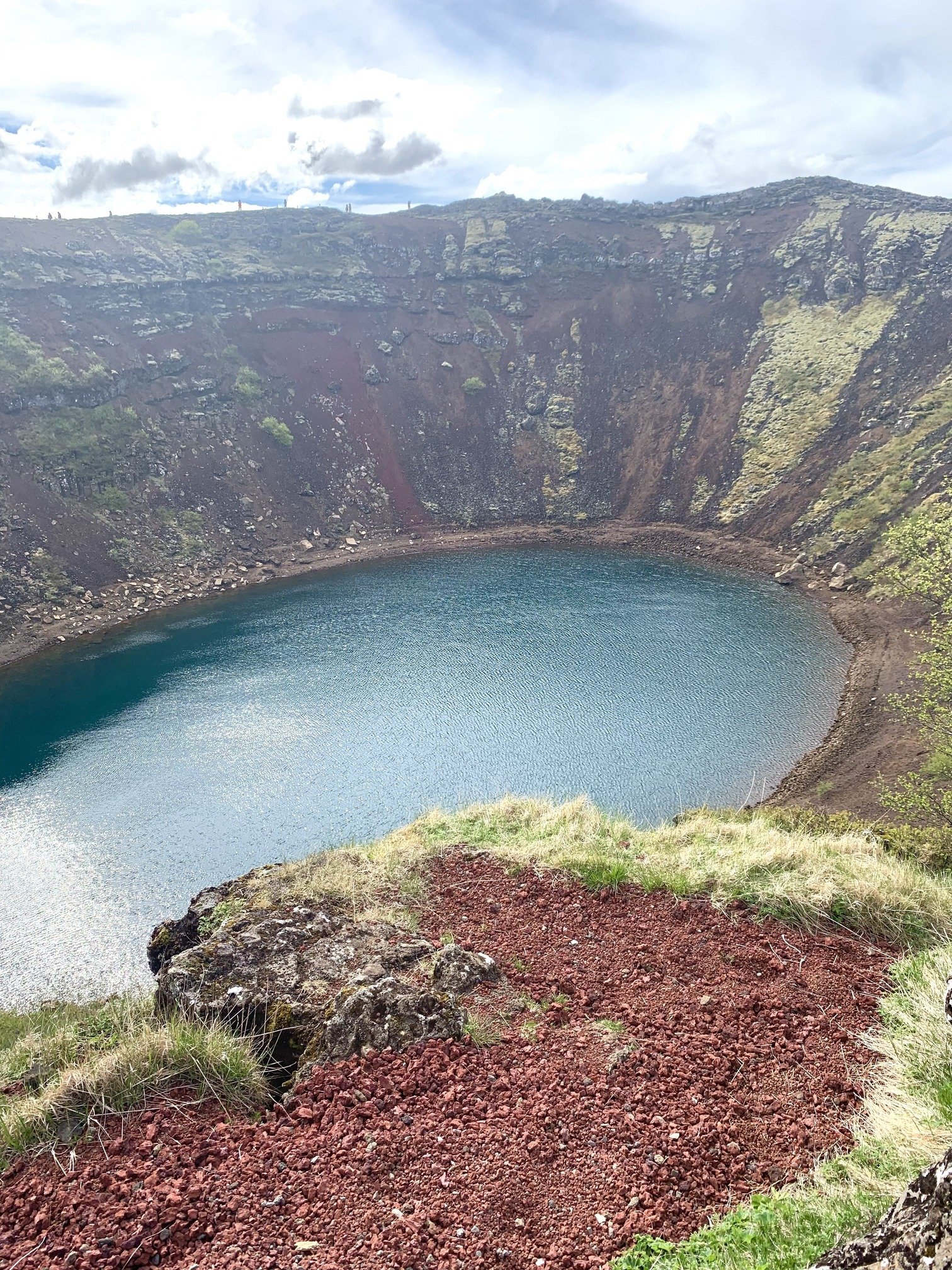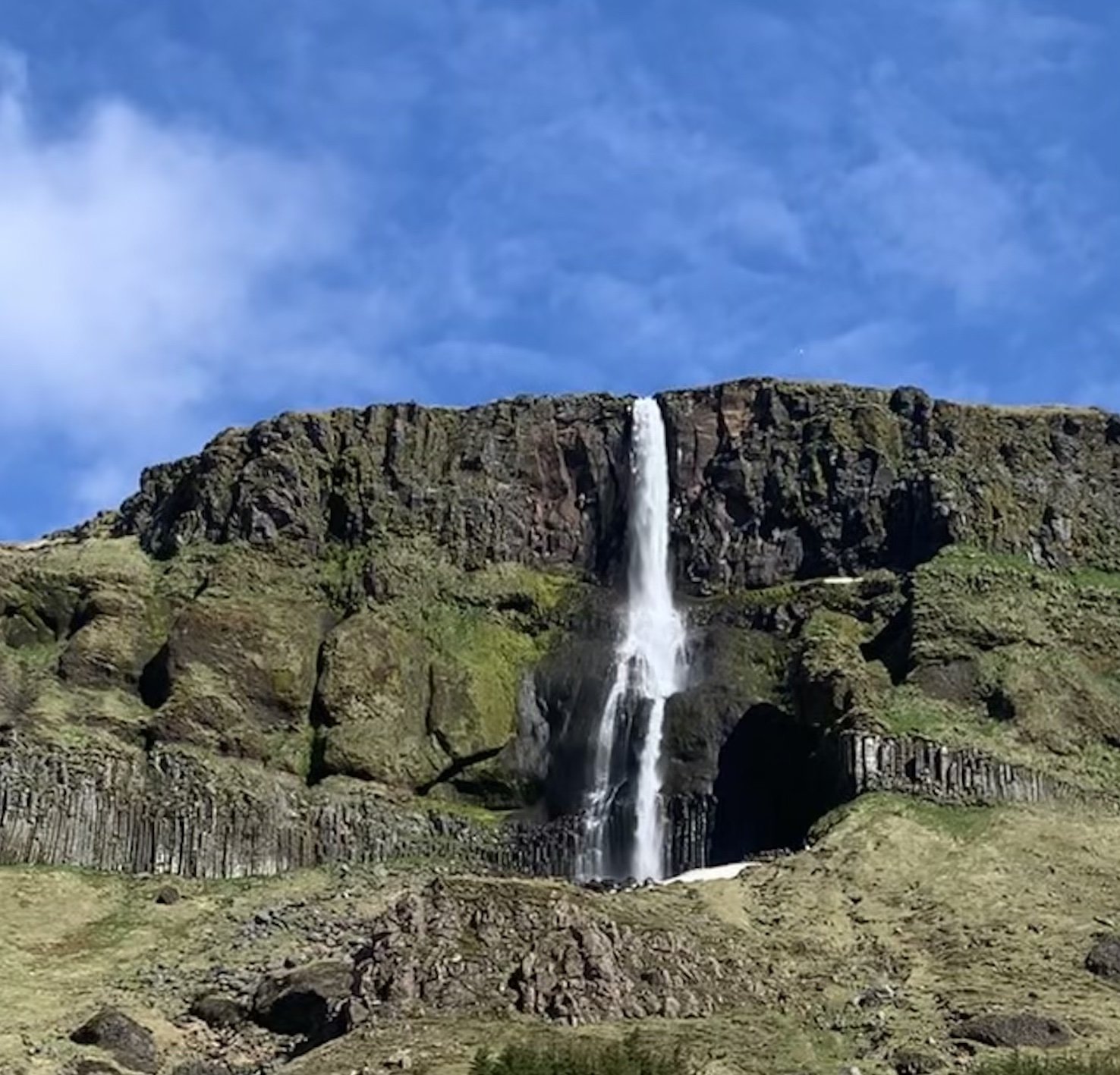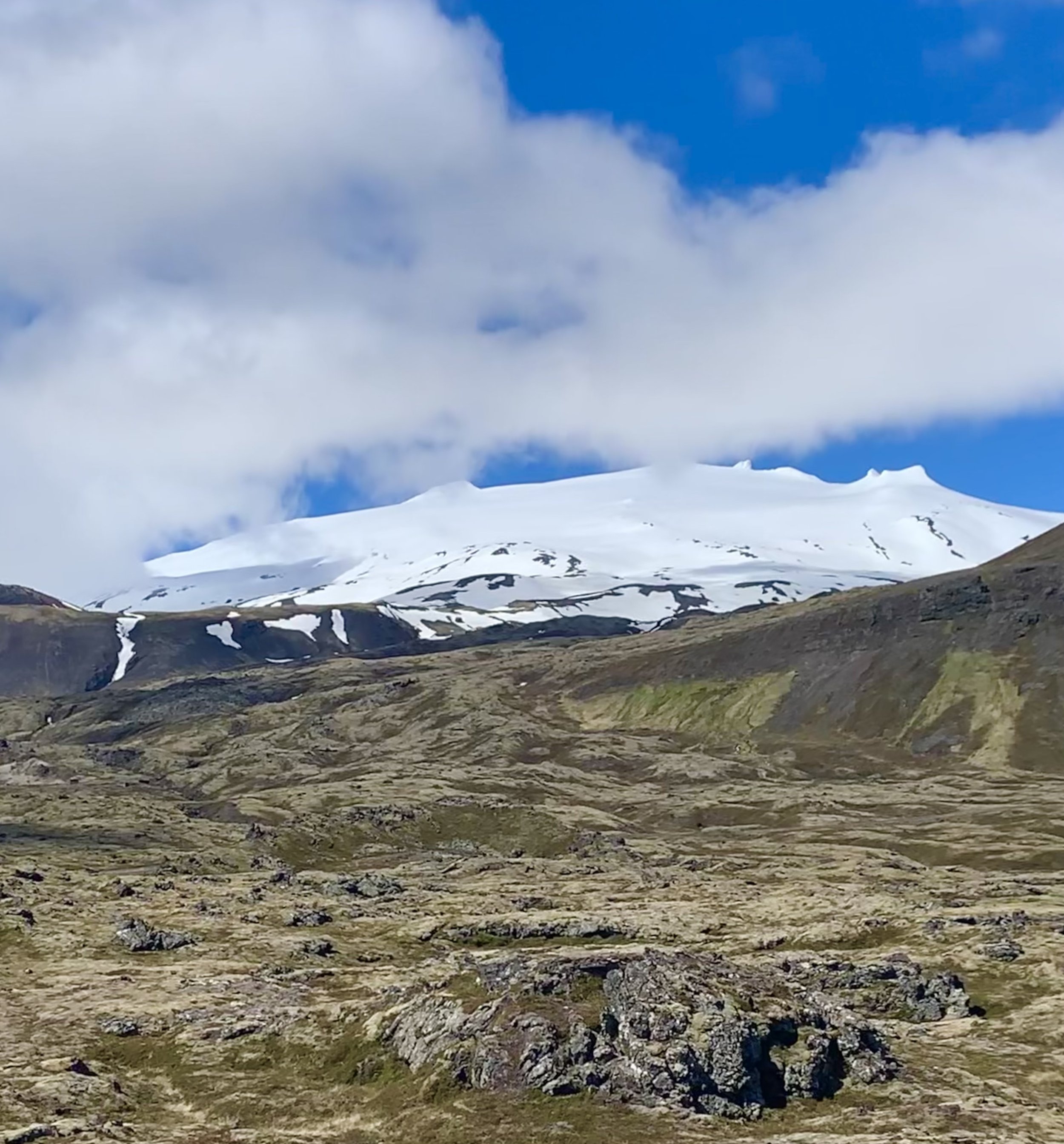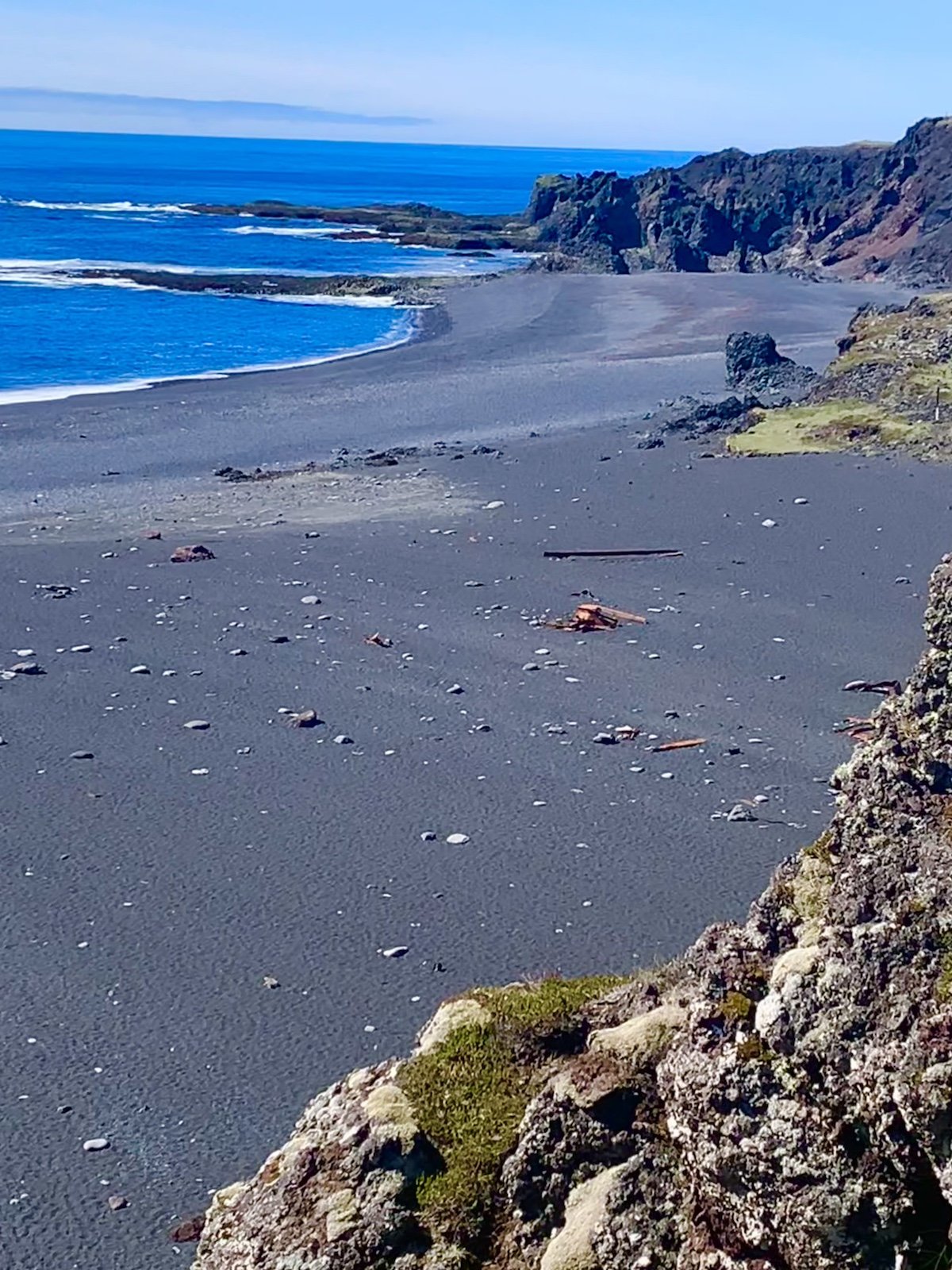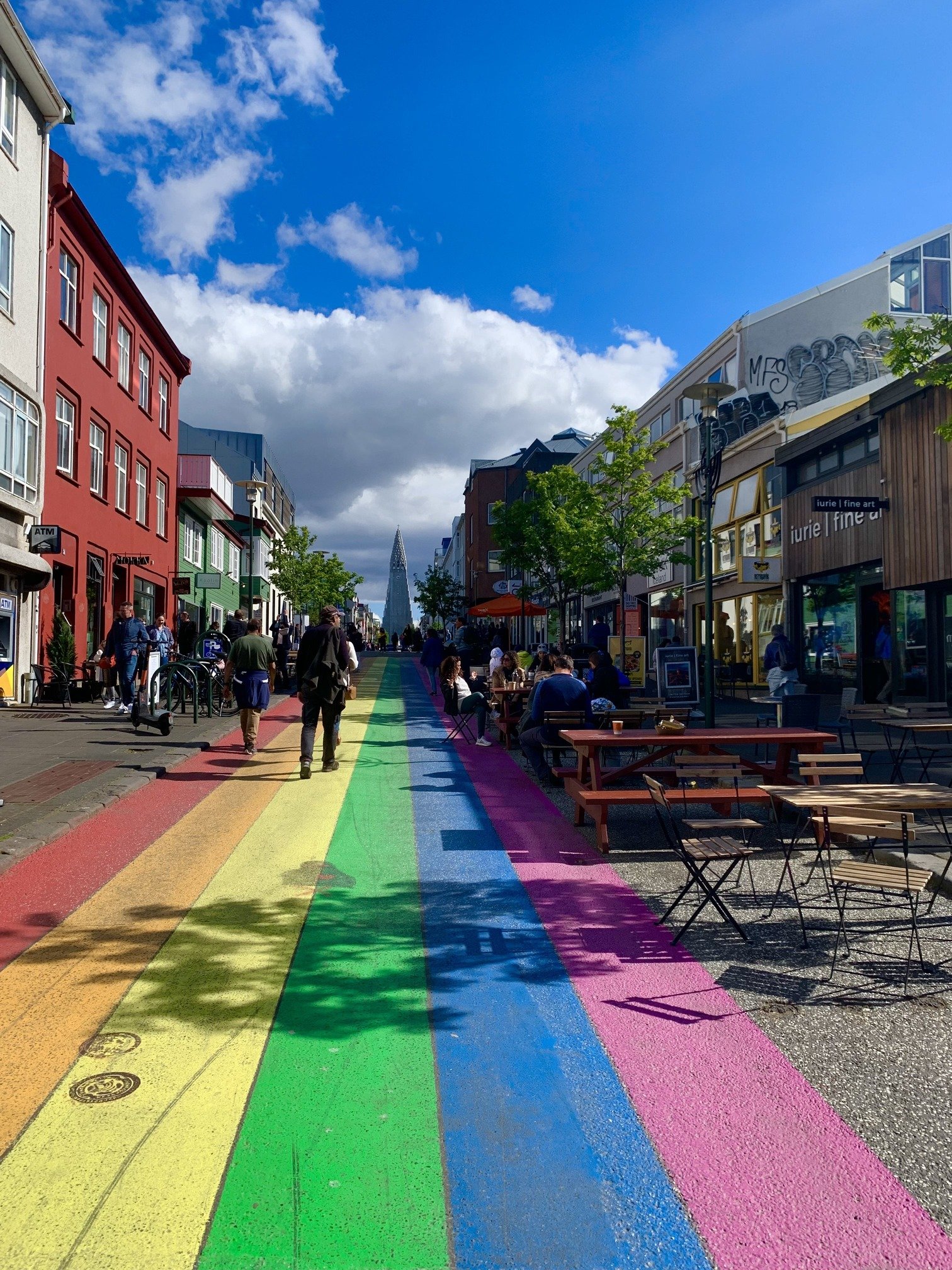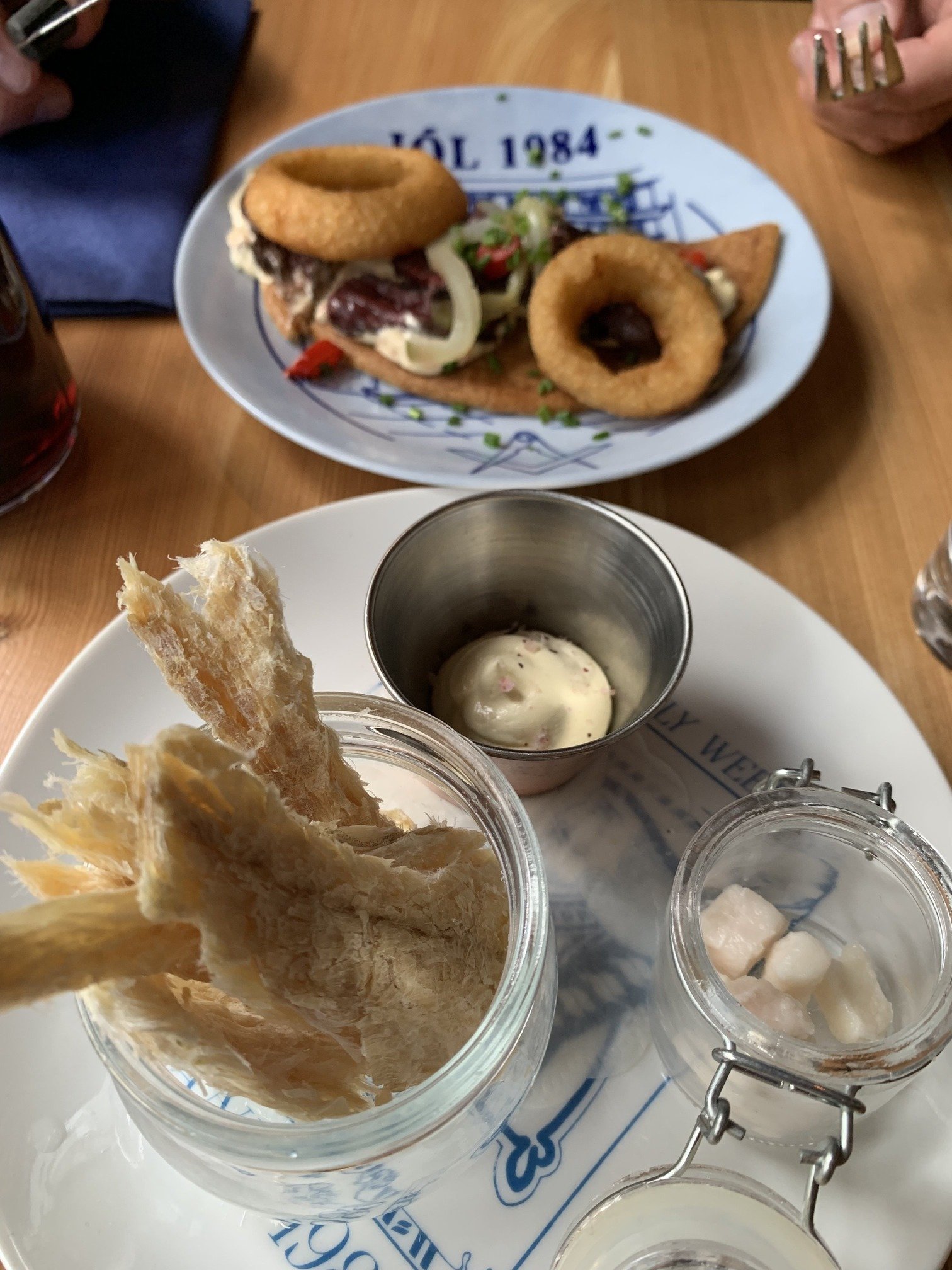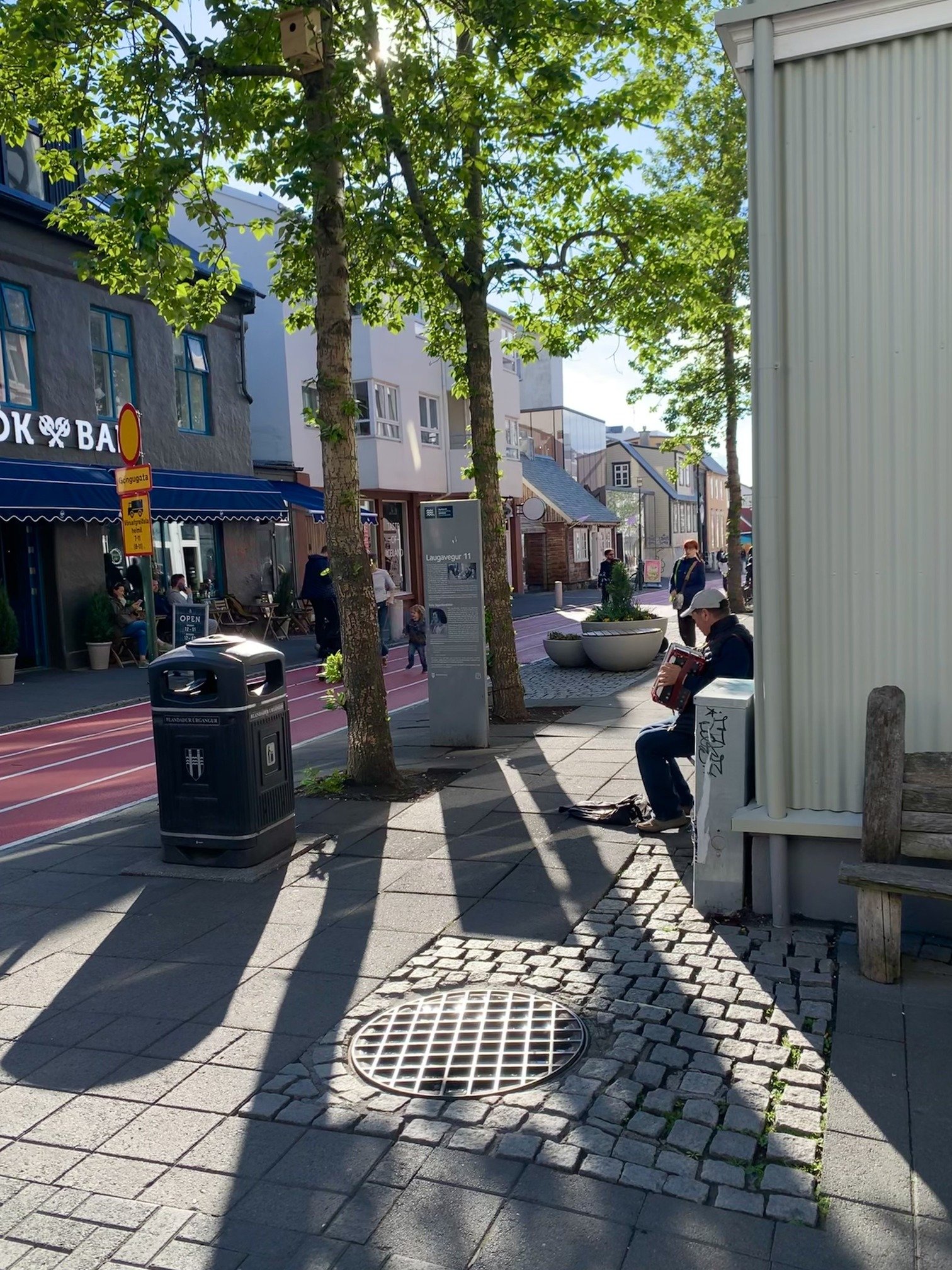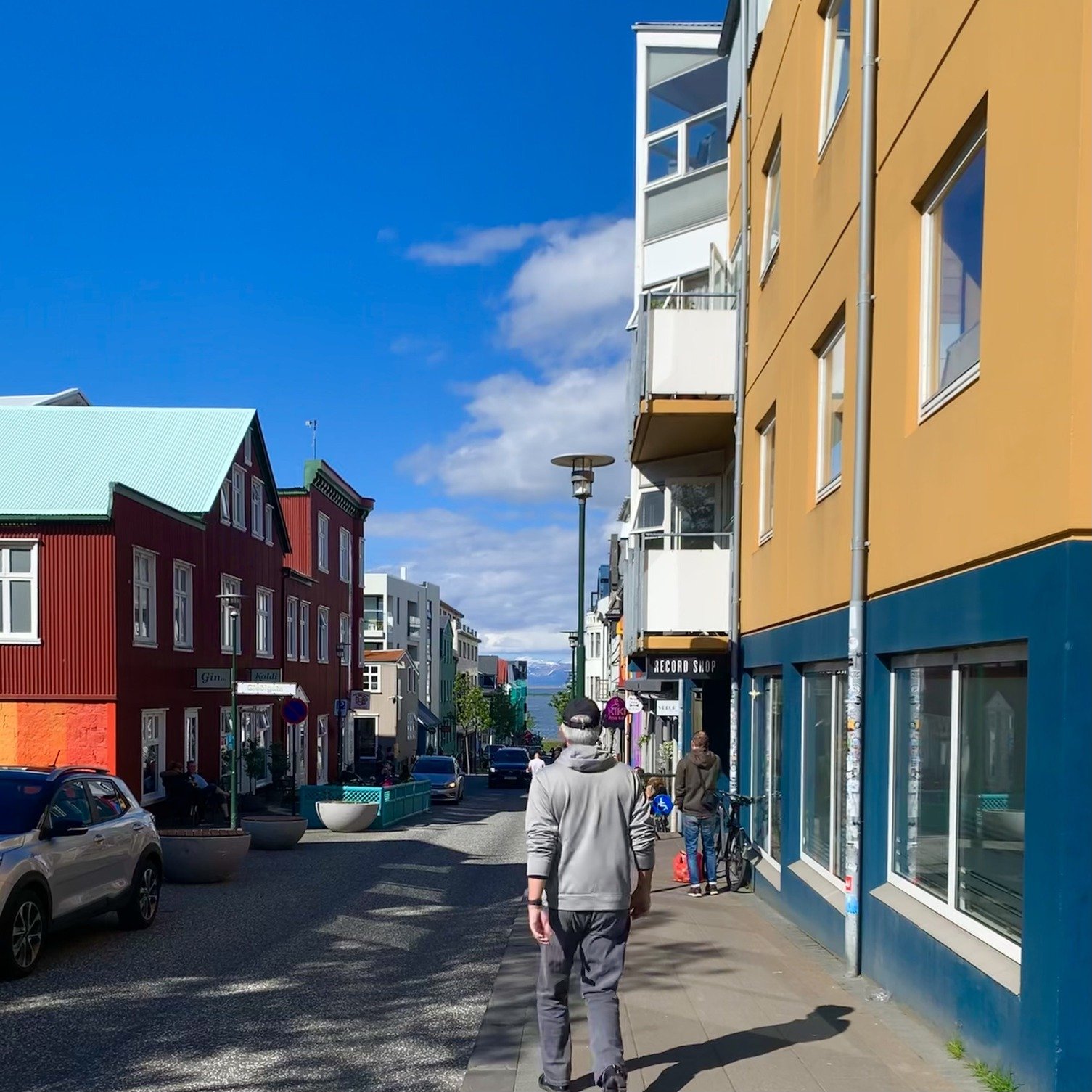Iceland: So Much Potential Off the Beaten Path
*Note: David wrote this piece (and the two previous ones on Norway and The Faroe Islands) after our return to Charlotte in May 2022, but, always the perfectionist, he was still revising these when he suddenly passed away 14 months later. So I’ve taken it upon myself to finish editing the pieces, adding photos, and sending them out as he would have done. This description of Iceland is the last travel write-up that David composed, but this was not the last big trip David and I took together before he passed away in July 2023. We had a fabulous Alaska adventure just two months before. However, he didn’t get the chance to write about it, so I will do so in the next month or so.
The next stop on our hop-scotch route homeward across the North Atlantic was Iceland. We were surprised that it was a simple one-hour flight from the Faroes. Iceland is an increasingly popular destination for US travelers, and with good reason. It has many fascinating natural features and a unique culture and history.
Maybe our expectations were too high, but Allie and I both felt that Iceland failed to impress us as much as it should have. Our visit suffered in our itinerary from following the Faroes which we had loved so much. The latter is intensely green. Iceland is icy gray, but there are vast swaths of green lowlands and evergreen trees. Iceland has volcanoes, sandflats, waterfalls, glaciers, fjords, lava fields, and more. It is beautiful in its own way, a way that is dark and stark.
Iceland is a volcanic island covering a huge area, about the same size as the state of Kentucky. This vast space is home to a mere 300,000 inhabitants; Kentucky has about 4.5 million. The majority of Icelanders live in the southwestern part of the country, in and around its capital, Reykjavik. This means the eastern half of Iceland is very empty.
The country’s burgeoning tourist industry is a well-oiled operation. Most Americans come on some form of tour package. These funnel visitors to an over-hyped hot spring resort called the Blue Lagoon and an over-trafficked route called the Golden Circle. This path provides stops at the country’s most popular sites. The falls at Gullfoss are indeed very impressive. It has two stunning drops, one at 36 feet and the other at 69. The spray from the falls can be bone-soaking, so it was good that we wore rain gear. At the Þingvellir National Park, you can walk along the fault line where the Tectonic plates that define the continents of Europe and North America collide.
But some of the attractions along the Golden Circle were disappointing: the Kerid Crater was a deep hole circled by a path less than a mile long. It honestly looked as if that could have been dug with a front-end loader. There was zero drama in this site, but we made the obligatory walk around the crater in about 15 minutes, all the while asking each other, “Is this all there is?” The Stokkur Geysir was substantially less dramatic than those we saw in Yellowstone. It does get props for the eruptions, every 15 minutes or so. Everywhere around the Circle are tour buses—an endless convoy of buses clogging the roads.
As is our usual modus, we opted to rent a car and explore on our own. The driving was easy — little traffic and fine roads. We drove north to the Snæfellsjökull National Park, which offered a glacier and gorgeous beaches. There were a mere handful of visitors with whom to share all this beauty.
Reykjavik was a welcoming, friendly place, and very walkable. We stayed in a cute boutique hotel, Thingholt, just off the main shopping street that was filled with convivial bars, restaurants, lively sidewalk cafes, local shops, and street musicians. Throngs of happy young people strolled the streets, enjoying the warm, sunny weather. The three dinners we had in Reykjavik were all quite different. The first one, at unassuming little Reykjavik Kitchen compared favorably with those we had enjoyed in Copenhagen. We especially liked the coffee-cured salmon and the lamb carpaccio. On our last night there, we gave in to basic touristic impulse, booked a table at Islandic Bar, and tried eating fin whale on Icelandic crumpet (not a fan, for both culinary as well as conservation reasons). The dried (and very salty) shark that is credited with having saved many Icelanders from starvation in the late 18th century was barely edible. I likely would have succumbed to starvation. But we were in Iceland and wanted to try the local delicacies.
Iceland has its own strange-sounding language, but more Icelanders speak English than Icelandic. They are proud of their country and their heritage. With a history replete with domination by European forces such as Norway and Denmark, they are today understandably proud of their independence.
Our own lukewarm reaction to Iceland may have been an anomaly. After all, we had just come from the resplendent Faroes and Norway. We’ve heard from many others how much they have enjoyed their time there, and had we been there just a month or two earlier, we would have been able to witness the eerie and mesmerizing Northern Lights. Reaching Iceland from the US is increasingly easy, with flights being added from numerous airports. While I do not want to discourage anyone from visiting this unique country, I would advise getting off the beaten track and exploring its vast terrain without the tour bus crowds.


